AR and VR Impact on Mobile App Development
 21 November 2023
21 November 2023The dawn of a new era in technology is upon us as Augmented Reality (AR) and Virtual Reality (VR) begin to reshape the landscape of mobile app development. These cutting-edge technologies are not just additions to the developer’s toolkit. They represent a paradigm shift in how we interact with digital spaces. As a prominent AR VR mobile app development company, we stand at the forefront of this transformation, pioneering new ways to develop mobile AR and VR apps.
This revolution is redefining user engagement and enhancing app functionality, bringing a more immersive and interactive experience to the mobile device. The journey is filled with innovative opportunities, from conceptualizing how to develop a mobile AR app to mastering the intricacies of VR mobile app development. Augmented and virtual reality are more than just buzzwords; they are the cornerstones of the next generation of mobile app development.
As developers and a development company deeply invested in application and software development, we are witnessing a shift from traditional mobile applications to reality app development, where augmented reality and AR applications are becoming as commonplace as conventional apps. With each new use case, AR and VR are proving their worth in gaming and various industries, heralding a future where the line between the physical and digital worlds becomes increasingly blurred.
The Rise of AR and VR in Mobile Apps
In recent years, the mobile landscape has been revolutionized by the rise of augmented and virtual reality (AR and VR), marking a significant evolution in how users interact with their devices. This integration into the mobile experience has been a technological and creative endeavor, with app developers and companies increasingly exploring AR and VR’s vast potential.
The development process of these applications involves a meticulous blend of virtual objects and real-world interactions, providing an immersive AR experience that’s both engaging and innovative. App development services have expanded to include specialized augmented reality and VR app development, focusing on utilizing VR technology to enhance user engagement.
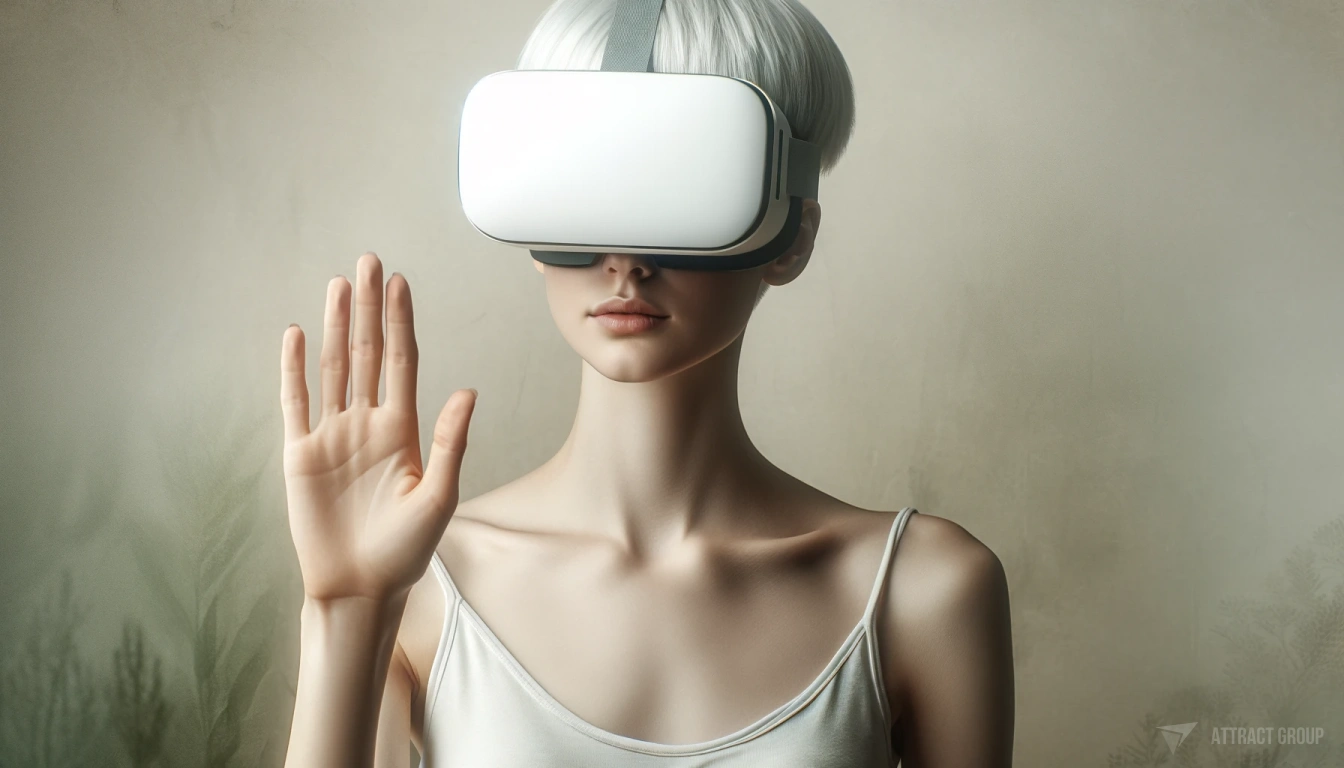
The development team behind each AR mobile app or VR application is pushing boundaries, striving to use virtual and augmented reality to transform the mundane into the extraordinary. As more users use AR and VR in mobile apps, it’s evident that the potential for these technologies is boundless. Developments in this field are not just about novelty; they represent a new era in which VR and AR are essential components in the toolbox of app development companies.
Foundations of AR and VR Mobile App Development
In the swiftly evolving landscape of mobile technology, augmented reality (AR) and virtual reality (VR) have emerged as groundbreaking tools, reshaping our interaction with digital environments. The foundations of AR and VR in mobile app development are critical to understand, as they are key to unlocking immersive experiences that blur the lines between the real and virtual worlds.
At their core, these technologies enhance user engagement and provide interactive, three-dimensional experiences. The importance of AR and VR cannot be overstated, especially in a world increasingly reliant on digital interfaces. Their integration into mobile applications enriches the user experience and opens new avenues for industries to interact with consumers.
From location-based AR to VR experiences in mobile app development, AR and VR technologies are revolutionizing how we perceive and interact with virtual environments. As we delve deeper into AR and VR mobile app development services, understanding the underlying principles becomes essential to harness their full potential in creating innovative augmented reality applications.
Key Principles for Embedding AR and VR into Mobile Applications
| Principle | Detaile | Importance | Examples |
| Real-Time Interaction | Ensures seamless real-time AR and VR elements integration for dynamic user engagement within the app. | Enhances user experience and realism. | AR games, VR simulations. |
| Spatial Awareness | Utilizes location-based AR and other AR technologies to understand and interact with the physical environment. | Critical for creating contextually relevant AR experiences. | Navigation apps, AR city guides. |
| User-Centric Design | Focuses on designing intuitive AR and VR experiences that cater to user expectations. | Ensures accessibility and usability. | User-friendly AR shopping apps and educational VR tools. |
| Performance Optimization | Balances the graphical fidelity with device capabilities to ensure smooth performance. | Prevents lag and enhances user engagement. | Optimized AR filters VR video streaming. |
Understanding User Expectations and Technological Prerequisites
Educating users about AR and VR is integral to successful app development. Users expect immersive, interactive experiences that seamlessly blending virtual elements with the real world. They anticipate intuitive interfaces that allow them to interact with virtual objects effortlessly. Understanding these expectations is crucial for developers to create engaging and practical augmented reality applications.
The technological prerequisites for AR and VR app development include advanced AR and VR technologies, such as AR glasses for enhanced experiences and efficient augmented reality software development tools.
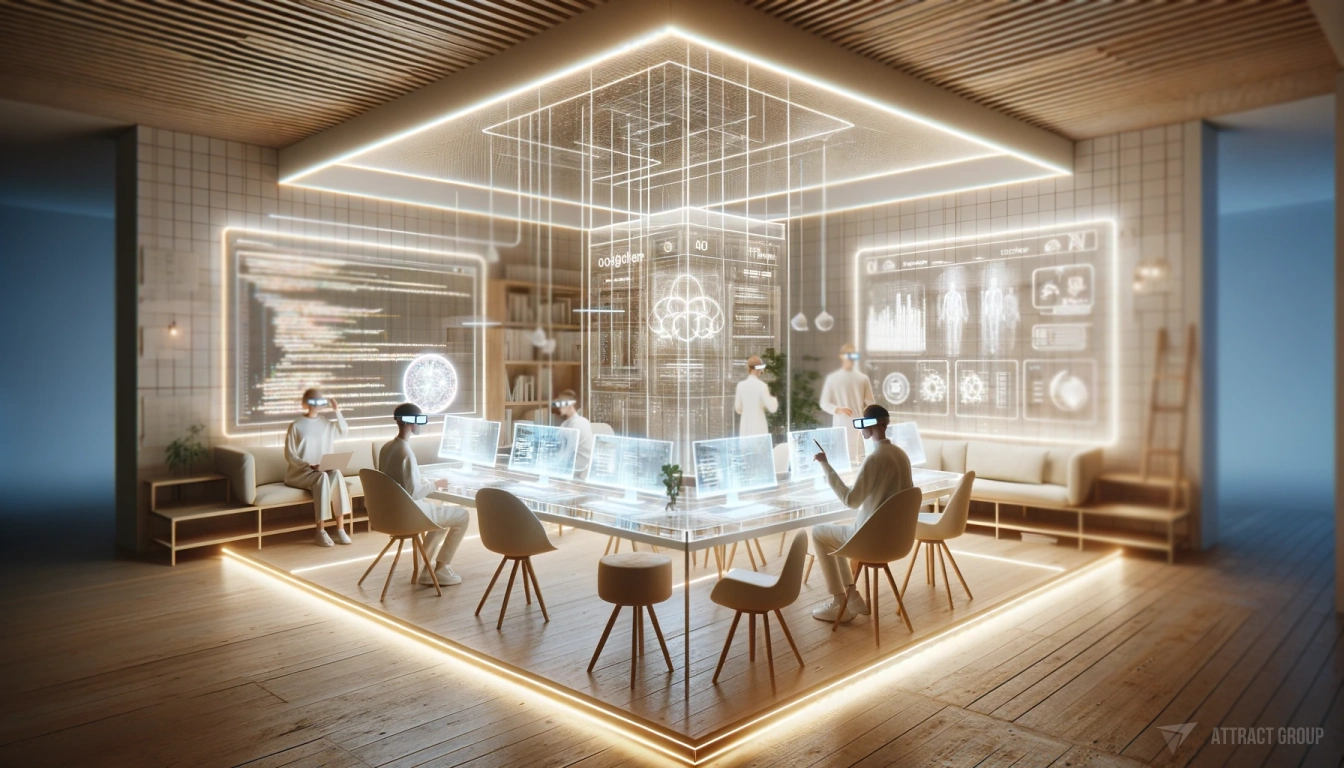
Developers must also consider the hardware capabilities of mobile devices, as these technologies demand high processing power and graphics capabilities. By comprehending these aspects, developers can better tailor their approach to augmented reality mobile app development, ensuring that the end product meets and exceeds user expectations.
Choosing a Specialist AR VR Mobile App Development Company
In the rapidly evolving technological landscape, choosing a specialist AR VR mobile app development company is pivotal for businesses aiming to harness the potential of augmented and virtual reality technologies. When considering developing a mobile AR or VR app, looking for a development partner who understands the nuances of AR and VR and can enhance the mobile app experience through innovative solutions is essential.
A company with expertise in AR and VR mobile app development can help businesses capitalize on the numerous use cases for AR and VR, ensuring their applications stand out in augmented reality. This involves a meticulous selection process, focusing on the developers’ proficiency, creativity, and track record in immersive app development.
In this context, understanding the benefits of VR technology, staying abreast of trends in VR, and appreciating the steps of augmented reality involved in the development process are crucial. This article explores what to look for when selecting a development partner. It underscores the significance of a proven track record in creating engaging, state-of-the-art AR and VR applications.
Key Considerations in Selecting an AR VR Mobile App Development Company
| Consideration | Description | Why It’s Important | Examples |
| Expertise in AR/VR Technologies | Depth of knowledge in AR and VR development techniques | Ensures the app leverages the full potential of AR and VR capabilities | Use of advanced AR frameworks like ARKit, ARCore |
| Innovative Approach | Ability to create unique and engaging user experiences | Differentiates the app in a competitive market | Incorporation of interactive 3D models, real-time environment mapping |
| Proven Track Record | History of successful AR and VR app developments | Indicates reliability and quality assurance | Portfolio of diverse AR/VR projects |
| Understanding of Market Trends | Awareness of the latest trends in AR and VR technologies | Keeps the app relevant and forward-thinking | Implementation of trending features like mixed reality, social AR experiences |
The Significance of a Proven Track Record
in immersive app development cannot be overstated when investing in VR and considering how to develop a mobile VR app. A specialist AR VR mobile app development company with a rich portfolio demonstrates its capability to deliver high-quality applications. It reflects its understanding of AR and VR’s diverse and evolving use cases.
This experience is a testament to their ability to navigate the complexities of AR and VR technologies, ensuring that the final product is technically sound and creatively compelling. Mobile app developers with a history of successful projects in augmented reality can provide valuable insights and innovative solutions, enhancing the overall mobile app experience.
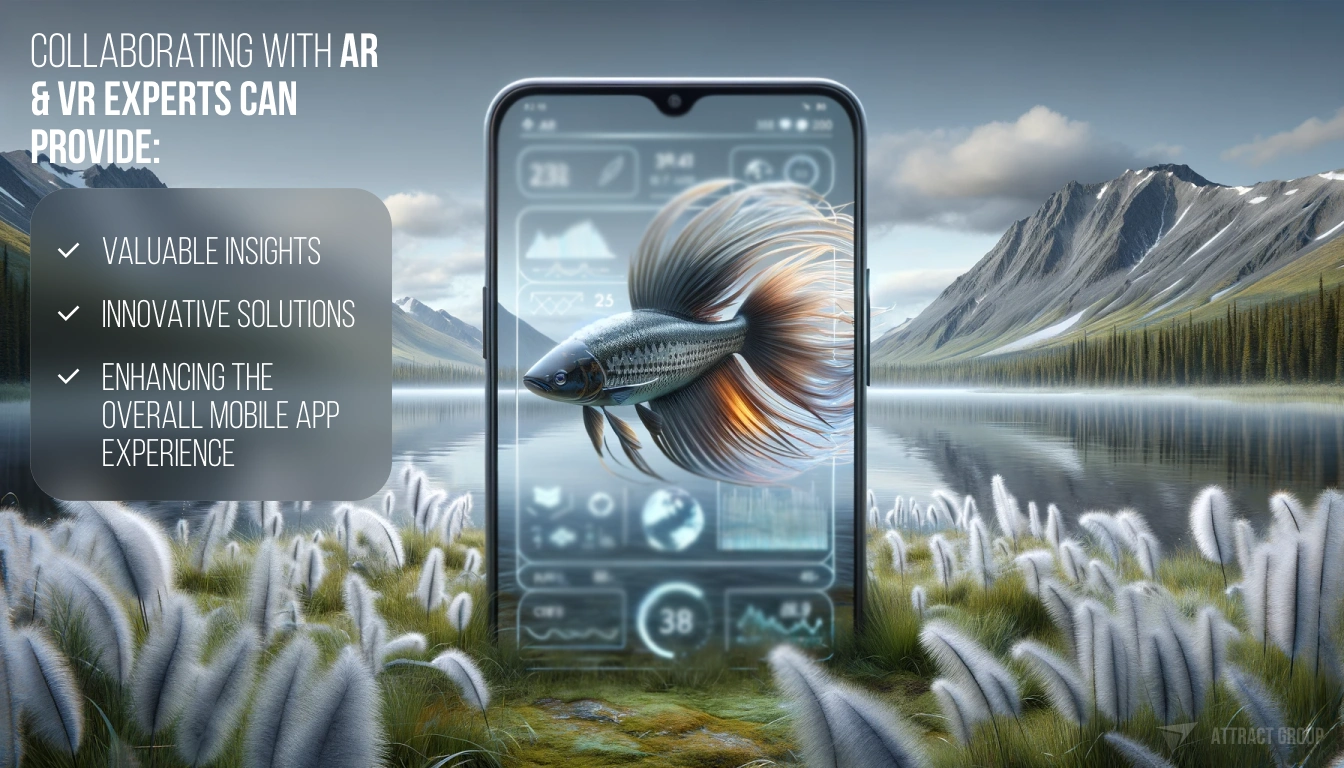
By choosing a partner with a robust track record, businesses can confidently invest in AR and VR apps, assured that they are collaborating with experts who can bring their vision to life in the ever-changing world of augmented reality technologies.
The Journey of AR Mobile App Development
The journey of augmented reality (AR) mobile app development is a fusion of creativity and technological innovation, a path that intertwines the realms of the real and the virtual. This journey begins with the conceptual seed of an idea, where the potential of AR is envisioned to enhance a traditional application.
AR transforms into a tangible reality as the development progresses, blending digital enhancements with the physical world. This is where the magic of augmented reality app development truly unfolds.
Throughout this process, the developers embark on a meticulous app development process, where each phase, from ideation to deployment, is crafted with precision and attention to detail.
They delve into the depths of AR app development, harnessing augmented and virtual reality technologies to bring immersive experiences to life. VR can help visualize and refine app features, while AR brings a layer of interactive engagement, adding a new dimension to mobile application development.
The journey of AR mobile app development is more than just coding and design; it’s about envisioning a future where the digital and physical worlds coexist seamlessly. It’s a journey that continually evolves as augmented reality development adapts to new technological advancements, offering endless possibilities for how we interact with the world around us.
Roadmap for Developing an AR-Enabled Mobile App
- Conceptualization and Planning: This initial stage is crucial for laying the foundation of an augmented reality app. It involves understanding the target audience, defining the app’s purpose, and conceptualizing how augmented reality can enhance the user experience. This phase also includes market research to identify potential competition and opportunities.
- Design and User Experience (UX): In this phase, the focus shifts to the design aspects, incorporating user interface (UI) elements that are intuitive and engaging. The augmented reality app development design phase is unique, as it must seamlessly blend virtual elements with the real world.
- Technical Development: This stage involves the actual coding and creation of the app. Developers use various tools and technologies to develop an AR or VR app. This includes choosing the right AR development platform, integrating AR SDKs (Software Development Kits), and ensuring the app is compatible with various devices.
- Testing and Quality Assurance: Rigorous testing is essential to ensure that augmented and virtual reality elements function as intended. This includes testing for usability, performance, and compatibility across different devices.
- Deployment and Maintenance: Once the app is developed, it is deployed on app stores. Post-launch, the app requires continuous monitoring and updates to improve features, fix bugs, and adapt to new AR technologies.
Impact of AR in Various App Categories
Augmented reality development has shown a significant impact across various sectors:
- Retail: AR apps have revolutionized shopping experiences, allowing customers to try products virtually before purchasing. This not only enhances customer engagement but also reduces return rates.
- Education: AR brings complex concepts to life in educational apps, making learning more interactive and immersive. This use of AR in education has been shown to improve understanding and retention.
- Healthcare: Augmented reality apps in healthcare assist in complex surgeries by providing surgeons with real-time, enhanced visuals. They also aid in patient education and rehabilitation.
- Gaming and Entertainment: AR has significantly changed the gaming landscape. Games like Pokémon GO are prime examples of how AR can create engaging and interactive user experiences.
- Real Estate: Real estate apps use AR to offer virtual tours of properties, enabling a more realistic view of spaces without physical visits.
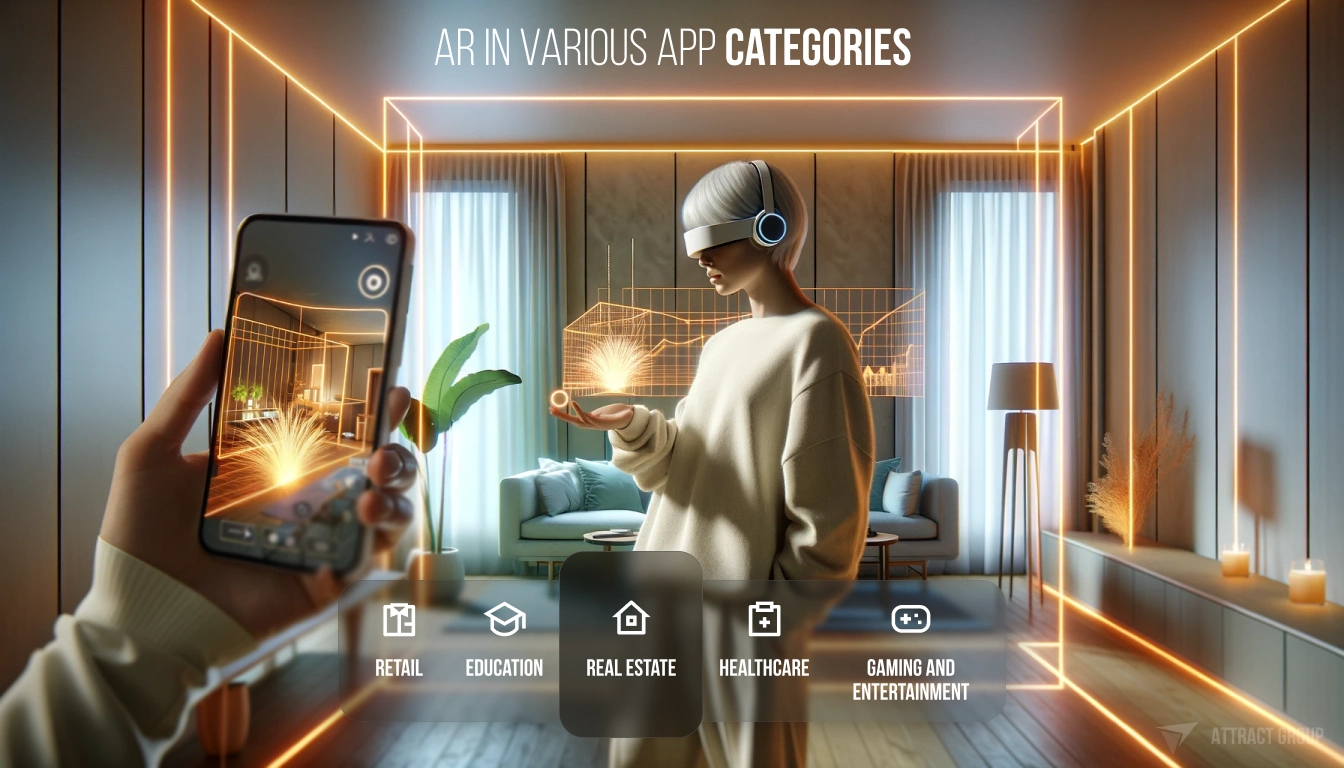
The augmented reality applications in mobile app development are vast and continue to grow. Each case study underscores the potential of AR to transform traditional app features, offering users an enriched, interactive experience. As technology evolves, the line between augmented and virtual reality blurs, paving the way for more innovative and immersive app experiences.
Exploring VR in Mobile Apps
In today’s rapidly evolving technological landscape, integrating Virtual Reality (VR) into mobile app development represents a groundbreaking shift. VR and Augmented Reality (AR) are not just a trend but a pivotal transformation in how we interact with digital content. Once confined to two-dimensional interfaces, mobile apps are on the cusp of a revolution, immersing users in three-dimensional, interactive experiences.
This leap is crucial as it paves the way for more intuitive, engaging, and meaningful user interactions, propelling the potential of mobile applications into new realms of creativity and functionality. Exploring VR in mobile apps is essential to harness the full spectrum of possibilities in mobile app development, making the virtual world more accessible.
Developing for Mobile VR: A Process Overview
- Conceptualization: Initially, ideating a VR concept that aligns with user needs and market trends is vital. This phase involves brainstorming ideas that leverage the potential of augmented reality and VR to solve real-world problems or enhance entertainment experiences.
- Choosing the Right Platform: Developers must decide whether to create an augmented reality app, a VR app, or a combination. The choice depends on the app’s purpose, target audience, and desired level of immersion.
- Tool Selection: Selecting appropriate development tools and software, like Unity or Unreal Engine, is crucial for building augmented reality and VR experiences. These tools offer a robust framework for developing high-quality virtual environments.
- Designing User Experience (UX): UX in VR differs significantly from traditional apps. It involves designing three-dimensional interfaces and ensuring user comfort and engagement within the virtual environment.
- Developing 3D Models and Environments: This step involves creating detailed 3D models and immersive environments central to VR. Developers must focus on realism and interactivity to enhance user immersion.
- Programming and Interactivity: Incorporating interactivity is essential for VR. This involves coding for users to interact with virtual objects and environments, often using complex algorithms and physics engines.
- Testing and Iteration: Rigorous testing is necessary to ensure a seamless and bug-free experience. This includes testing for usability, performance, and compatibility across different devices.
- Deployment and Updates: After launching the VR mobile app, continuous updates and maintenance are required to improve the experience, add features, and keep up with technological advancements.
What is The Impact of VR on User Interactions and App Interfaces?
VR is revolutionizing user interactions and app interfaces by introducing a paradigm shift in how we perceive and interact with digital content. It enables users to engage with applications in a much more immersive and intuitive manner. VR mobile app development transcends the limitations of traditional screen-based interfaces, allowing users to experience and manipulate digital environments as if they were real.
This heightened interaction fosters a deeper connection and understanding of the content, whether for educational, entertainment, or practical purposes. The ability to develop AR and create an augmented reality app adds another layer, blending the real and virtual worlds seamlessly.
This duality of virtual and augmented reality in apps offers a rich, multi-sensory experience, making the content more memorable and impactful. As we continue to build augmented reality and VR capabilities, the potential of augmented reality in enriching user experiences and transforming the mobile app landscape in 2023 and beyond is immense.
Technical Roadmap for VR App Development
Understanding the technical roadmap in VR app development is pivotal for any organization aiming to innovate in the mobile landscape. This roadmap guides the development process and ensures alignment with the latest technological advancements and user expectations.
Embracing a well-structured technical roadmap allows for efficient resource allocation and timely project completion and ensures the end product is both viable and cutting-edge. Key aspects of this roadmap include adopting the right tools and platforms and effectively overcoming unique technical challenges associated with mobile VR.
Necessary Tools and Platforms for Crafting VR Mobile Applications
| Tool/Platform | Usage | Key Features | Compatibility | Community Support |
| Unity 3D | Game and app development | Robust 3D rendering, cross-platform support | iOS, Android, Windows | Extensive with forums, tutorials |
| Unreal Engine | High-end game development | Photorealistic graphics, real-time rendering | iOS, Android | Large, active community |
| Google VR SDK | VR app integration | Streamlined VR content creation, easy integration | Android, iOS | Google-backed resources, documentation |
| Vuforia | AR development | Object recognition, marker-based AR | iOS, Android, UWP | Strong developer forums, resources |
| Blender | 3D modeling, animation | Open-source, a comprehensive toolset for modeling | Cross-platform | Large community, extensive tutorials |
Overcoming Technical Challenges Unique to Mobile VR
To surmount the technical challenges in mobile VR, it’s essential to prioritize user experience through rigorous testing and intuitive design. Conducting user testing with real users through surveys, interviews, observations, and analytics is crucial. This direct feedback loop enables developers to understand user needs and adapt the VR experience accordingly.
Design principles like consistency, simplicity, feedback, and affordance are vital. These principles ensure the VR experience is user-friendly and immersive despite the limitations of mobile hardware. Staying abreast of technological advancements and incorporating them into the development process also plays a key role in overcoming these challenges.
In the rapidly evolving field of mobile app development, VR and AR technologies are not just trends but essential components of the future landscape. By understanding and implementing a comprehensive technical roadmap, developers can create immersive and impactful VR applications, revolutionizing the user experience in the mobile domain.
Best Practices for Designing AR and VR Apps
Designing AR (Augmented Reality) and VR (Virtual Reality) apps is not just about leveraging cutting-edge technology; it’s about creating transformative and user-centric experiences. By focusing on user needs, AR and VR apps can revolutionize the mobile landscape and significantly impact app development. The key is to craft experiences that are intuitive immersive, and which enhance the user’s interaction with the digital world.
Here are some best practices for crafting user-centric designs for AR and VR mobile apps:
- User Research and Feedback: Begin with thorough user research to understand your target audience’s needs, preferences, and limitations. Implement continuous feedback loops to refine the app based on real-world usage.
- Intuitive User Interface: Design interfaces that are easy to navigate and understand. Use virtual reality and augmented reality elements to guide users naturally through the app’s environment.
- Comfort and Accessibility: Ensure the app is comfortable for extended periods and accessible to users with different abilities. This includes considering the ergonomics of the device and the application’s design.
- Performance Optimization: Since AR and VR applications are resource-intensive, optimize performance to minimize latency and prevent motion sickness.
- Contextual Relevance: Develop augmented reality elements that are contextually relevant to the user’s environment, enhancing the sense of immersion.
- Safety Considerations: Incorporate features that ensure user safety, such as spatial awareness, to prevent app accidents.
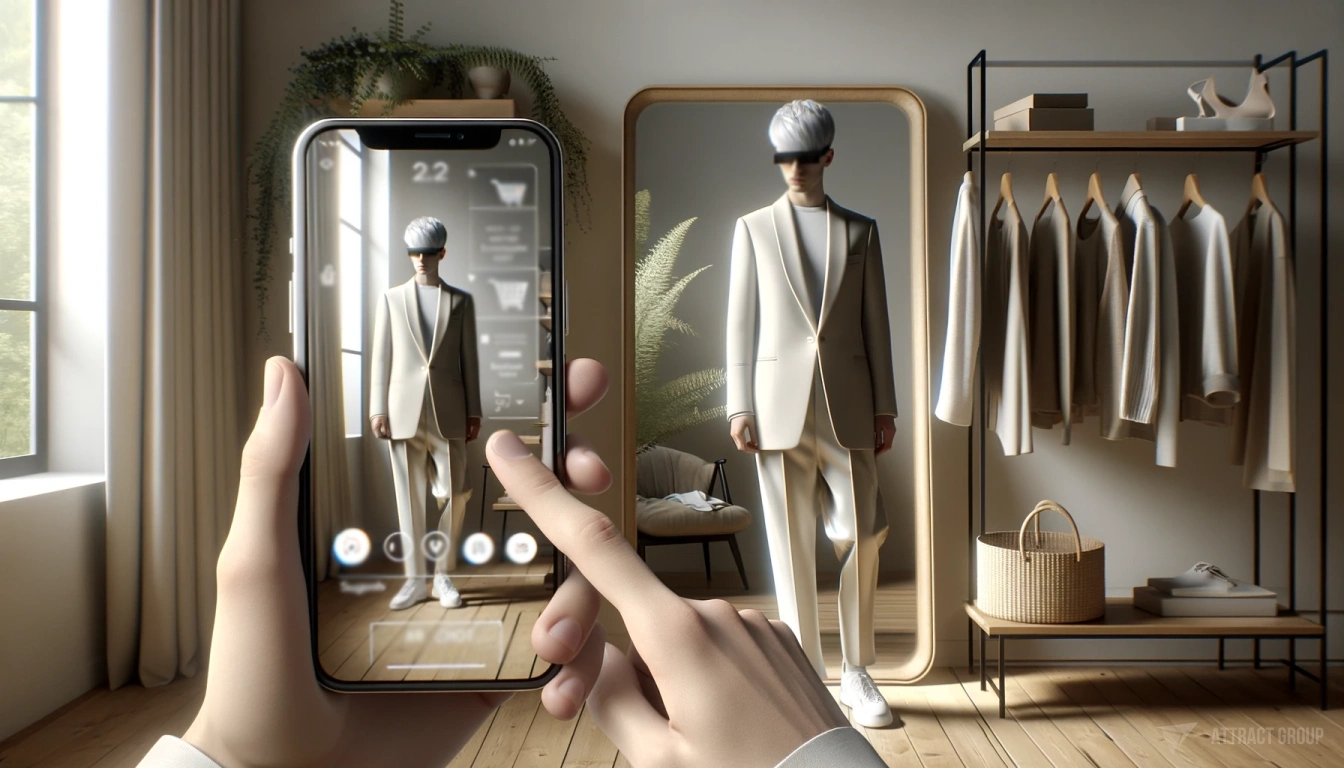
When leveraging immersive elements to enhance user experience and app usability, it’s crucial to integrate AR and VR seamlessly into the app’s functionality. The goal is to use virtual and augmented reality to create captivating experiences and add tangible value to the user’s interaction with the app. This can involve:
- Realistic Interactions: Creating natural interactions within the app allows users to manipulate virtual objects as if they were real.
- Spatial Audio: Using spatial audio cues to provide a more immersive experience and to guide users through the app.
- Multi-Sensory Experiences: Engaging multiple senses deepens immersion and makes interactions more intuitive.
- Personalization: Tailoring experiences based on user behavior and preferences to increase relevance and engagement.
AR and VR can help enhance their mobile app’s usability, offering users a compelling reason to return. Applications of augmented reality and virtual reality in mobile apps are vast, ranging from entertainment to education and beyond. The benefits of using AR and VR in apps in 2024 are clear.
They offer a level of engagement and interactivity that traditional apps cannot match. As AR technology is already making strides in various sectors, it’s evident that AR and VR apps will continue to play a significant role in the evolution of the mobile app development landscape.
Monetization Strategies in AR and VR Apps
Monetization in augmented reality (AR) and virtual reality (VR) apps represents a critical aspect of the evolving mobile landscape. Understanding and implementing effective monetization strategies becomes essential as these technologies revolutionize app development.
AR and VR apps offer immersive, engaging experiences, making them ideal for innovative monetization approaches. The integration of these technologies in mobile apps not only enhances user engagement but also opens new revenue streams. It’s vital to explore and follow monetization strategies in AR and VR apps to ensure the sustainability and profitability of these advanced technological ventures.
Effective Models for Generating Revenue from AR and VR Features
Revenue generation in AR and VR apps can be approached through various models, each tailored to the unique capabilities of these technologies. These models should leverage AR and VR’s immersive and interactive nature to create value for users and developers.
- In-App Purchases: This model allows users to buy virtual items or features within the AR/VR environment, enhancing their experience.
- Subscription Models: Offering premium content or features in AR/VR apps through a subscription can provide a steady revenue stream.
- Advertising: Integrating ads non-intrusively within AR/VR experiences can be lucrative. This includes sponsored content or interactive ads that utilize AR/VR capabilities.
- Freemium Model: Providing basic features for free while charging for advanced functionalities can attract a broader user base.
- Selling Data Insights: Anonymized data collected from user interactions with AR/VR apps can be valuable for market research.
- Affiliate Marketing: Partnering with brands to promote products or services within the AR/VR environment can generate revenue through commissions.
- AR-as-a-Service: This model offers technology that enhances AR capabilities, like graphics creation tools. It’s a growing segment, with platforms like Unity, Amazon Sumerian, and 8th Wall democratizing advanced AR capabilities (source).
Analyzing Market Trends to Capitalize on AR and VR App Investments
Staying abreast of market trends is essential for capitalizing on investments in AR and VR apps. This involves understanding consumer behavior, technological advancements, and industry shifts to make informed decisions.
Detailed Analysis:
- Consumer Preferences: Identifying trends in consumer preferences helps tailor AR/VR experiences to meet market demand (source).
- Technological Innovations: Keeping up with the latest advancements in AR and VR technology ensures the development of cutting-edge apps.
- Competitive Landscape: Understanding the strategies of competitors and industry leaders can inform better investment decisions (source).
- Emerging Markets: Identifying emerging markets for AR/VR applications can open new opportunities for growth and expansion.
- Regulatory Changes: Staying informed about regulatory changes in the digital space can help navigate legal challenges effectively.
Developers and investors can effectively navigate the dynamic landscape of AR and VR in mobile app development, ensuring technological advancement and commercial success.
Start monetizing now!
The Future of Mobile Apps with AR and VR
Augmented Reality (AR) and Virtual Reality (VR) are increasingly becoming integral components in mobile app development, signaling a paradigm shift in how we interact with digital content. AR’s ability to overlay digital information onto the natural world and VR’s immersive environments enhance user experience and create new avenues for app functionality.
The evolution of AR and VR in mobile apps has been remarkable. Initially seen as novelties, these technologies have now found practical applications in various sectors. For instance, in retail, AR allows customers to visualize products in real-world settings, significantly enhancing the shopping experience. Similarly, VR is revolutionizing learning and training environments by providing immersive, interactive experiences that were previously impossible.

One emerging trend is blending AR and VR with Artificial Intelligence (AI) and machine learning. This integration is enabling more personalized and context-aware experiences. For example, AR apps can now recognize objects and surroundings, offering information or suggestions based on user preferences and location.
Another significant trend is the improvement in AR and VR hardware. Developing more powerful and energy-efficient mobile processors and advanced sensors and cameras allows for more sophisticated and seamless smartphone AR and VR experiences. This hardware evolution is crucial in making AR and VR more accessible and widespread.
Anticipating Future Advancements and Preparing for the Next Wave of Innovation
The future of AR and VR in mobile apps looks bright, with advancements expected to revolutionize various aspects of our daily lives. One key area of development is the enhancement of user interfaces. Future AR and VR apps will likely offer more intuitive and natural interaction methods, such as gesture control and voice commands, making them more user-friendly and immersive.
Moreover, a growing focus is on creating more inclusive and accessible AR and VR experiences. This includes designing apps that cater to a diverse range of users, including those with disabilities. The development of universal design principles in AR and VR apps is expected to broaden their appeal and utility.
Integrating AR and VR with other emerging technologies, such as the Internet of Things (IoT) and 5G connectivity, is anticipated to open up new possibilities. This could lead to real-time, interactive AR experiences seamlessly integrated with the physical world, enhancing everything from gaming to remote work.
Another exciting prospect is the development of AR and VR for more specialized applications. Fields such as healthcare, education, and urban planning could see transformative changes with these technologies, offering innovative solutions to complex problems.
In conclusion, the future of mobile apps with AR and VR is not just about enhancing existing applications but creating new experiences and solutions. As these technologies continue to evolve, they are set to revolutionize how we interact with the digital world, making it more immersive, interactive, and integrated with our daily lives.
Conclusion
The integration of Augmented Reality (AR) and Virtual Reality (VR) in mobile app development has ushered in a new era in the tech world, profoundly impacting how users interact with their devices. AR mobile app development has enabled the overlaying of digital information onto the real world, offering innovative, context-rich experiences. Similarly, VR mobile app development has opened up immersive worlds, transforming everything from gaming to education. Companies specializing in AR VR mobile app development are at the forefront of this technological revolution, driving innovation and creativity.
For app developers, understanding how to develop a mobile AR app or how to develop a mobile VR app has become essential. These skills are crucial in delivering the captivating and interactive experiences that users now expect. The journey of AR and VR in mobile apps is not just about enhancing entertainment but about reshaping industries, from retail to healthcare.
Encouraging a forward-thinking approach in this immersive tech space is imperative. Developers and companies need to continuously explore, innovate, and integrate these technologies, ensuring that AR and VR enhance user experiences and solve real-world problems. As we look to the future, the potential of AR and VR in mobile app development is limitless, promising a more interactive, informative, and immersive digital landscape.










